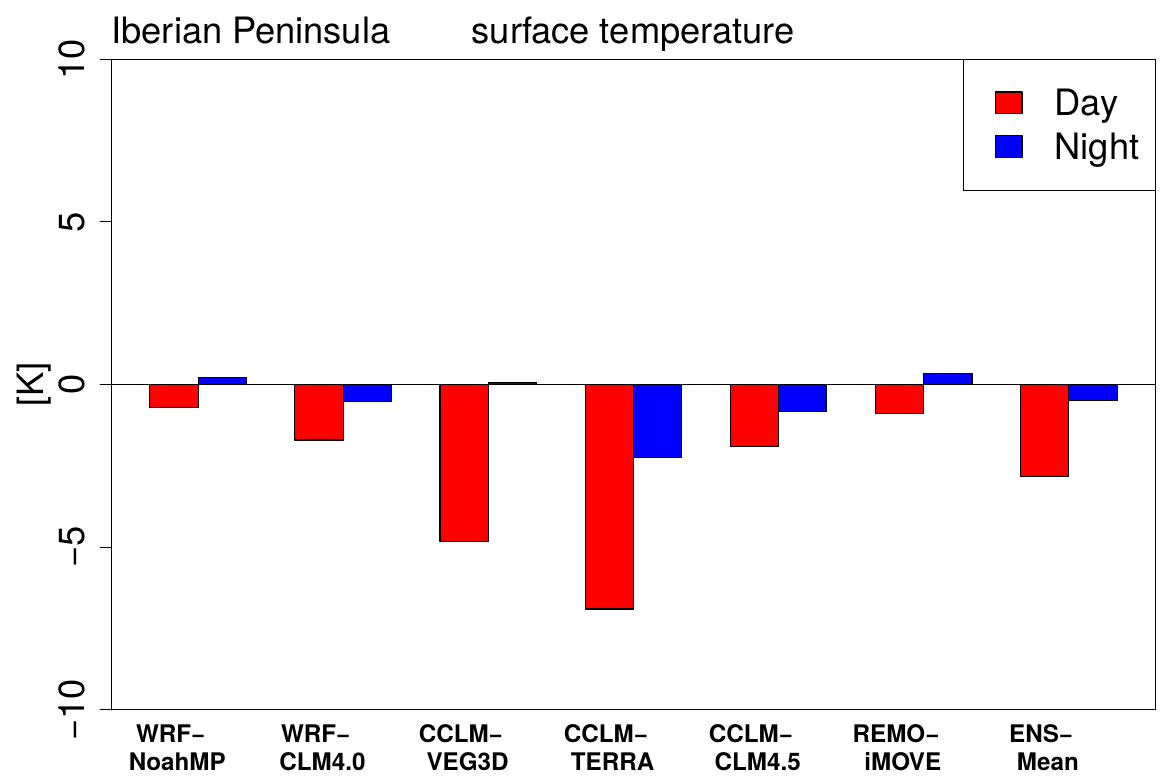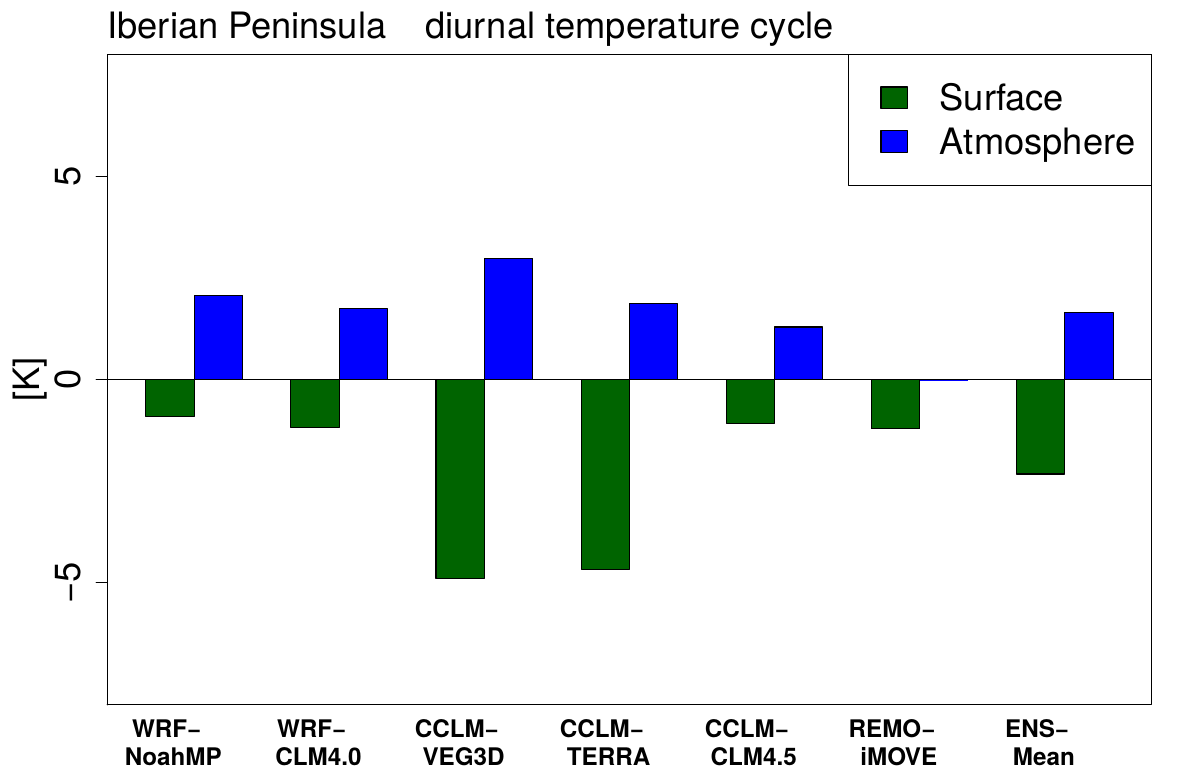The effects of afforestation on the diurnal temperature cycle
Afforestation is frequently discussed as a potential strategy to mitigate the effects of human-induced climate change. Beside its important influence on the global carbon cycle, forest cover changes affect the regional surface energy and water balance. In comparison to grassland, the albedo of forest is lower, absorbing more short-wave radiation. The LAI and the surface roughness of forest are higher, increasing the turbulent heat fluxes into the atmosphere. Whether afforestation leads to a regional warming or cooling, therefore depends on the ratio of the warming effect of an albedo decrease and the cooling effect of an increased turbulent heat transport into the atmosphere.
Since the weighting of these effects is deviating, afforestation responses are different in different regions of the world. While afforestation is associated with a cooling in the tropical low-latitudes, warmer climate conditions evolve in the high-latitudes. The effects of afforestation on the transition zone of the mid-latitudes are consequently controversially discussed within the scientific community. However, the results of observation-based studies indicate that there is a consistent temperature response to afforestation in summer in the mid-latitudes. Recent studies of satellite data and eddy covariance tower measurements robustly show that afforestation leads at the surface (top of the vegetation) to colder temperatures during the day and a reduced cooling during the night. But until now, these observed temperature responses to afforestation could not be consistently reproduced within model studies. Some models show warmer climate conditions in summer, while others indicate colder conditions.
To explore the reasons for this mismatch between model results and observations, within the Land Use and Climate Across Scales (LUCAS) initiative, for the first time, the effects of afforestation are investigated in a coordinated regional climate model intercomparison project. For this, extreme land use change scenarios are simulated for Europe with an ensemble of different regional climate models. In the first experiment, Europe is completely covered with forest (FOREST), where trees can realistically grow, in the second experiment all forest is turned into grassland (GRASS).
The results of the LUCAS-Ensemble simulations show that most of the models simulate colder surface temperatures during the day and a reduced cooling during the night with afforestation in summer (Fig. 1).

Thus, in this study, for the first time, the observed temperature response to afforestation could be reproduced within a model intercomparison study. The analysis of an additional sensitivity study indicates that this response is related to the higher surface roughness of forest compared to grassland. This higher surface roughness increases the turbulent mixing with the result that more turbulent heat is removed from the surface and released into the atmosphere during the day. The surface temperatures for forest are consequently lower than for grassland. During the night, more turbulent heat is transported from the atmosphere to the surface, due to this increased turbulent mixing. A reduced nocturnal cooling is the consequence in a forest. The diurnal temperature cycle is therefore at the surface reduced with afforestation and increased in the near-surface atmosphere (Fig. 2).

Reference: Breil, M., and Coauthors (2020). The Opposing Effects of Reforestation and Afforestation on the Diurnal Temperature Cycle at the Surface and in the Lowest Atmospheric Model Level in the European Summer. Journal of Climate, 33(21), 9159-9179.
Working Group: Regional Climate and Water Cycle
